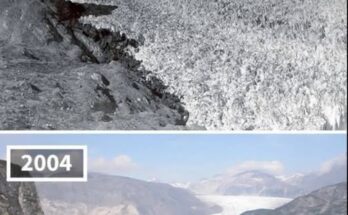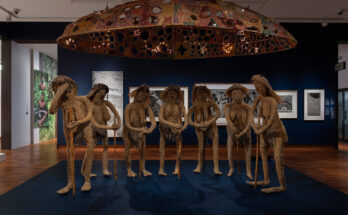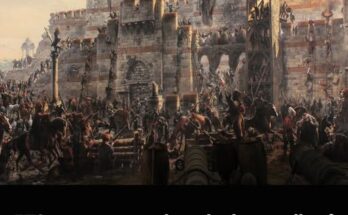In the quiet limestone mountains of Alicante, Spain, a series of ancient images whisper tales of a forgotten past. Hidden in the cliffs near the municipality of Castell de Castells lies one of Europe’s most extraordinary archaeological treasures — the cave paintings of Pla de Petracos. Estimated to be around 8,000 years old, these paintings are not just artistic expressions but sacred remnants of a people who once moved through this land, bound by survival, nature, and mysticism. Recognized as one of the finest examples of prehistoric rock art in the Iberian Peninsula, Pla de Petracos offers a rare glimpse into the mindset of Neolithic and Mesolithic cultures and their deep spiritual connection to the natural world.
This essay explores the historical context, artistic techniques, symbolic meanings, and cultural significance of the cave paintings at Pla de Petracos. We delve into their discovery, preservation, and the broader anthropological and philosophical implications of interpreting such ancient visual languages. In a world increasingly saturated with technology, these primal images offer a potent reminder of our shared human origins and our enduring need to communicate, commemorate, and connect.
1. Historical Context: The Neolithic Mindset
The cave paintings of Pla de Petracos date back to roughly 6000 BCE, a pivotal era in human development. This was a time when human societies were transitioning from hunter-gatherer lifestyles to more settled agricultural communities. The Iberian Peninsula, situated at the western edge of Europe, was a bridge between cultures, where innovations in farming, herding, and tool-making were just beginning to take root.
The people responsible for the paintings were likely part of this transitional phase. They lived in small, semi-nomadic groups, moved with the seasons, and relied on a blend of foraging and early agriculture. Spirituality was likely deeply tied to survival — fertility of the land, the abundance of game, the behavior of weather and celestial patterns. In this context, rock art was not merely decoration; it was a form of sacred communication.
Pla de Petracos is particularly associated with what scholars call “Levantine Art,” a style of rock painting found throughout eastern Spain, characterized by naturalistic depictions of animals, humans, and symbolic shapes rendered in red ochre. However, what sets Pla de Petracos apart is that it transitions toward what some researchers call “Macro-Schematic Art” — large, symbolic, abstract figures that likely held ritual or religious significance.
2. The Site: A Natural Sanctuary
Pla de Petracos is located in a sheltered area of the Alicante province, nestled in a mountainous landscape covered in Mediterranean vegetation. The site’s seclusion and natural beauty suggest it was chosen deliberately for its spiritual resonance.
The cave paintings are spread across several small rock shelters along a cliff face, rather than deep inside a cave. This accessibility to sunlight and landscape may indicate that the art was intended to be seen, possibly used in public rituals or seasonal ceremonies. The shelters face southeast, capturing the morning sun, which may have held symbolic importance related to rebirth or harvest.
The location would have been a place of reverence — a meeting point between the terrestrial and celestial, a liminal zone between the known and the mysterious. The very act of painting here, of creating large images on vertical stone, transformed the site into a sanctuary, a sacred theatre where the invisible could become visible.

3. The Paintings: Symbols, Shapes, and the Human Touch
The Pla de Petracos paintings consist of nine major panels, each featuring distinct figures, shapes, and compositions. What is most striking about them is their abstract nature. Unlike earlier cave art that depicts animals with detailed realism (such as in Lascaux, France), these figures are highly stylized, geometric, and enigmatic.
One of the most famous images is a large anthropomorphic figure with upraised arms, surrounded by rays or spikes. It resembles a sunburst or radiant deity, leading some to interpret it as a solar god or fertility spirit. The figure’s commanding posture suggests an act of invocation or offering, perhaps a shaman in the midst of a ritual.
Other images include concentric circles, comb-like shapes, zigzags, and tree-like forms. Some scholars interpret these as symbols of life, water, the cosmos, or clan emblems. Their precise meanings are unknowable, but their repetition and careful execution suggest they formed part of a coherent visual language — a code of symbols understood by those who created and used them.
Importantly, there is little evidence of animal figures here, unlike other Levantine art. This shift from representational to symbolic marks a cultural evolution — from recording immediate survival experiences to expressing more abstract, possibly religious, concepts.
4. Technique and Material: Ancient Tools and Pigments
The artists at Pla de Petracos used red and dark brown pigments, most likely derived from iron oxide (ochre), mixed with animal fat, plant sap, or water. Brushes were likely made from animal hair or chewed twigs. Some paintings may have involved finger-painting or blowing pigment through hollow bones, though this technique is less prevalent here compared to earlier Paleolithic cave art.
The pigment’s durability is remarkable. Despite millennia of exposure to the elements, many images remain clear and vibrant, a testament to both the materials used and the skill of the artists. Their lines are confident and deliberate, suggesting not only artistic ability but also cultural continuity — these painters were not lone geniuses but participants in a living tradition.
The sizes of the paintings vary, but many are large — one anthropomorphic figure measures over a meter in height. Such scale would require planning, scaffolding, and a coordinated effort, reinforcing the idea that these works were part of communal or ceremonial activities.
5. Interpretation: Spirituality, Identity, and Memory
What did the paintings at Pla de Petracos mean to the people who made them?
Because the figures are so symbolic, they invite varied interpretations. One prevailing theory is that they represent fertility rituals, linked to agriculture and the cycles of the earth. The radiant figures may symbolize deities or spiritual intermediaries — guardians of life, death, and rebirth.
Another theory connects the images to initiation rites or social hierarchies. The size and centrality of certain figures may indicate shamanic roles or tribal leaders. The repetition of certain symbols could mark family lineage, territorial boundaries, or seasonal pilgrimages.
Still others propose a cosmological reading. The concentric circles and tree-like images might represent the universe, with the central figure as an axis mundi — a symbolic world tree linking earth to sky. This would align with other ancient belief systems where trees, stars, and mountains served as metaphors for spiritual ascent and divine order.
Of course, these interpretations are speculative. What is certain is that these paintings meant something profound to the people who made them. They are not random doodles but messages — sacred messages — etched into stone to endure time, to speak to the gods, the tribe, and perhaps, to the distant future.
6. Discovery and Preservation
The cave paintings of Pla de Petracos were discovered in the early 20th century but only came to broader academic attention in the 1980s. Since then, they have been the focus of numerous archaeological, anthropological, and conservation studies.
In 1998, the site was declared a Property of Cultural Interest by the Spanish government and included in UNESCO’s World Heritage list under the category of “Rock Art of the Mediterranean Basin on the Iberian Peninsula.” This designation recognizes its value not only to Spanish heritage but to all humanity.
Preserving the paintings is an ongoing challenge. While the natural shelter of the rocks has protected them from complete erosion, modern threats include tourism, pollution, and climate change. To address this, the site has been fitted with viewing platforms and informational panels, allowing public access without direct contact with the paintings. There are also ongoing efforts to digitally scan and document the images for future study and conservation.
7. Broader Significance: Why Pla de Petracos Matters
Why do these paintings, so distant in time and culture, matter to us today?
First, they are a rare glimpse into the spiritual life of early Europeans — a kind of prehistoric scripture, painted rather than written. They show that even in an age of material struggle, humans sought transcendence, meaning, and connection. The symbolic turn of Pla de Petracos marks a critical moment in human development: the birth of abstract thought and religious imagination.
Second, the site challenges modern assumptions about progress and intelligence. These were not “primitive” people. They were capable of sophisticated symbolic reasoning, artistic expression, and possibly complex social structures. In many ways, their minds were not unlike ours.
Third, Pla de Petracos reminds us of the importance of cultural memory. These images have survived longer than any book, government, or institution. They speak to a continuity of human spirit — our desire to be remembered, to tell stories, to inscribe our existence upon the world.
8. Conclusion: Echoes from the Stone
The 8,000-year-old cave paintings at Pla de Petracos are more than archaeological curiosities. They are echoes — haunting, beautiful, mysterious — from a time when humans first began to grapple with the great questions of existence. Who are we? Where do we come from? What lies beyond the visible world?
Though we may never fully decipher their meaning, we can stand before them in awe, as the ancient people likely did. We can marvel at their endurance, reflect on their mystery, and feel — even across the chasm of eight millennia — a quiet connection.
In a world often obsessed with the new, Pla de Petracos reminds us of the deep roots we all share. Before cities, before writing, before kings and empires, there were people who painted their dreams in ochre on stone — and in doing so, became immortal.


